One of the first things I learned how to do when I began my cooking journey was making a balsamic reduction. It’s one of the simplest cooking skills, with such a huge payoff! This perfectly-sweet balsamic glaze recipe can be used as a sauce or dressing on everything from salads to salmon to chicken, so I’m always making another batch!

This post may include affiliate links that earn us a small commission from your purchases at no extra cost to you.
A balsamic reduction (also called balsamic glaze) is literally just a reduction of balsamic vinegar, which means cooking or heating the vinegar to remove the water. This process concentrates the sugars, which creates a sweeter, more intense flavor. Reducing also leads to a thicker, more syrupy consistency. I use this stuff all the time, and it’s such an easy way to make any dish more flavorful!
Ingredients for Balsamic Glaze
- Balsamic Vinegar: This is the 1 ingredient really needed for this recipe. Other vinegars can be reduced in the same manner, but it won’t have the same rich and sweet flavor.
- Honey: I use honey as my sugar component to help sweeten the glaze.
- Seasonings: I use bay leaf, and then add a hint of another herb or spice to get the flavor I want. Try oregano, basil, rosemary, or even cinnamon.
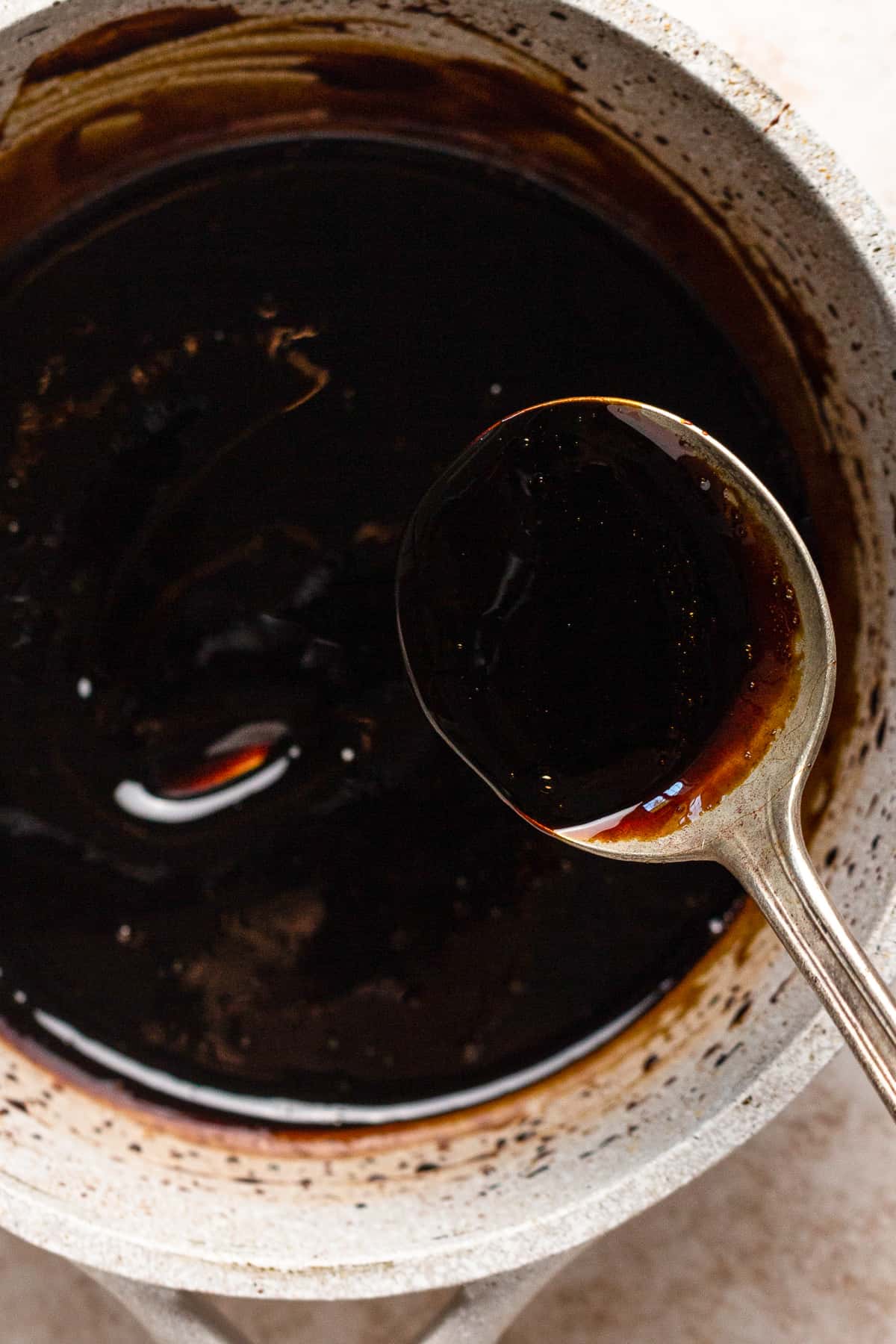
Tips for Success
- Be sure to reduce the heat and let it simmer instead of boil. Keeping it at a boil point will heat the vinegar too quickly, and can ruin the overall flavor and consistency.
- It can take anywhere from about 5-20 minutes to reduce, depending on your desired consistency (thicker consistency = longer simmer time).
- If the syrup becomes too thick, add a few drops of water and continue heating until it’s more pourable.
How to Store and Reheat
Let the balsamic glaze cool completely before storing, then pour it into an airtight container. I like using a mason jar, but anything with a tight seal is fine. Because of the vinegar’s acidic content, you can store it at room temperature for up to 1 week. After that, move it to the refrigerator.
To use leftovers, gently warm the the reduction in a saucepan or in the microwave. Add a small bit of water to help make it easy to pour or drizzle.
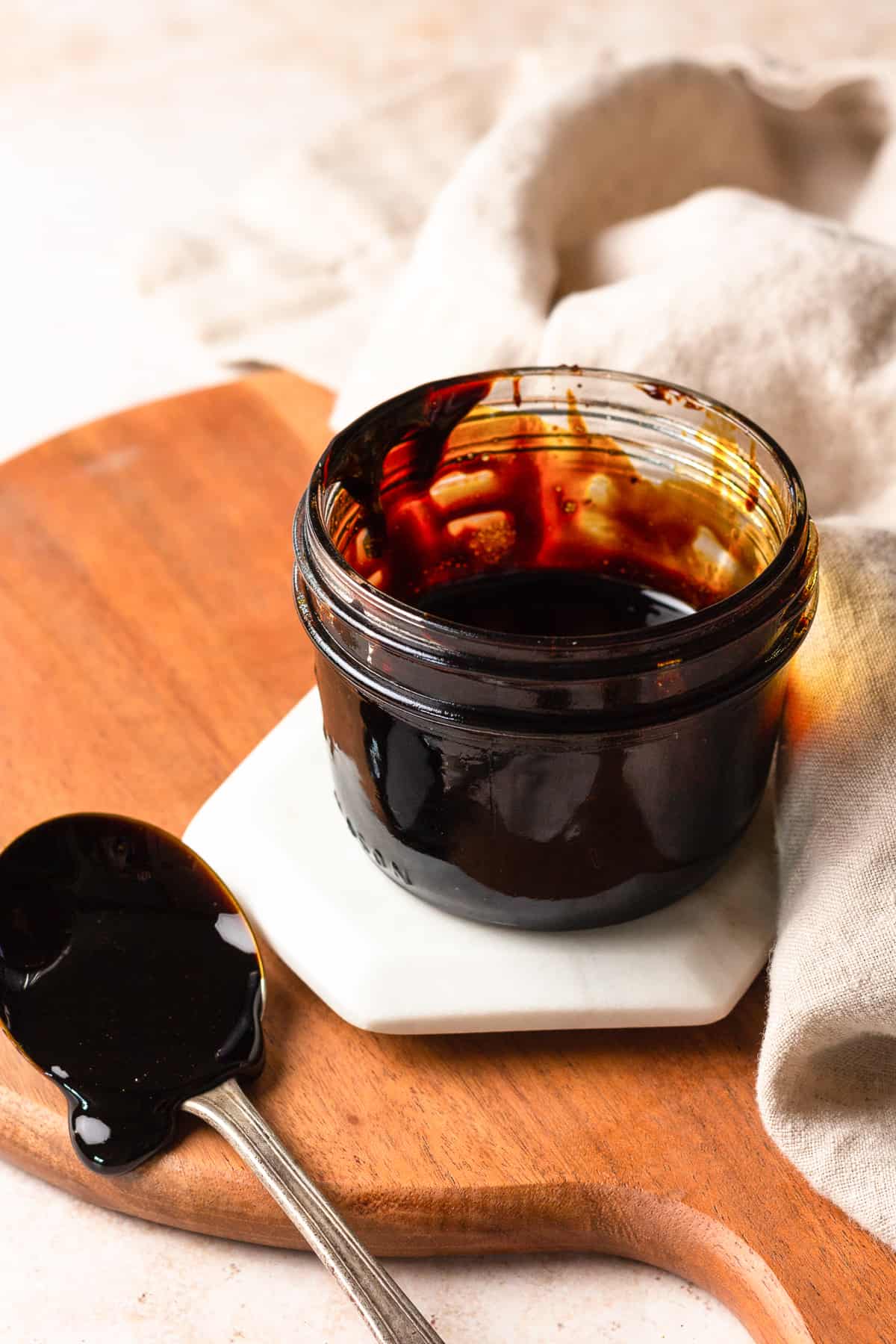
Uses
Balsamic reduction serves as a sauce, as a glaze, as a syrup, or as a dressing. I use it with salads, vegetables, fruits, meats, cheese, desserts, appetizers, dinner…
- Drizzle it over a chopped caprese salad.
- Use is as a glaze for chicken breast or salmon.
- Roast veggies (like carrots, Brussels sprouts, or tomatoes) in it.
- Drizzle it on top of grilled peaches or other fruits.
- Serve it on your next charcuterie board.
Balsamic Glaze Reduction Recipe
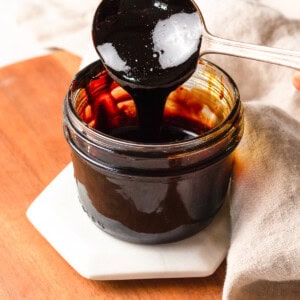
Ingredients
- 16 ounces balsamic vinegar
- 1-2 tablespoons honey
- 1 bay leaf
- 1 teaspoon dried seasoning of choice optional. Such as oregano, basil, rosemary, cinnamon, ginger,
Instructions
- Pour the vinegar into a medium-sized saucepan.16 ounces balsamic vinegar
- Add the honey and stir until it fully dissolves.1-2 tablespoons honey
- Add the bay leaf and any other optional herbs.1 bay leaf, 1 teaspoon dried seasoning of choice
- Bring to a boil over medium heat, then reduce and simmer until it starts to get syrupy. Watch closely so it doesn’t burn.
- Remove the bay leaf and strain through a sieve if other herbs have been added.
- Let cool and then refrigerate until ready to use.
- When time to use, warm slightly so the reduction will pour easily.
- Refrigerate indefinitely in an airtight container or jar.
Video
Becky’s Tips
Nutrition information is automatically calculated, so should only be used as an approximation.
How to Make Balsamic Reduction Step by Step
Pour: Pour 16 ounces of balsamic vinegar into a medium-sized saucepan.

Add Honey: Add 1-2 tablespoons of honey and stir until it fully dissolves.
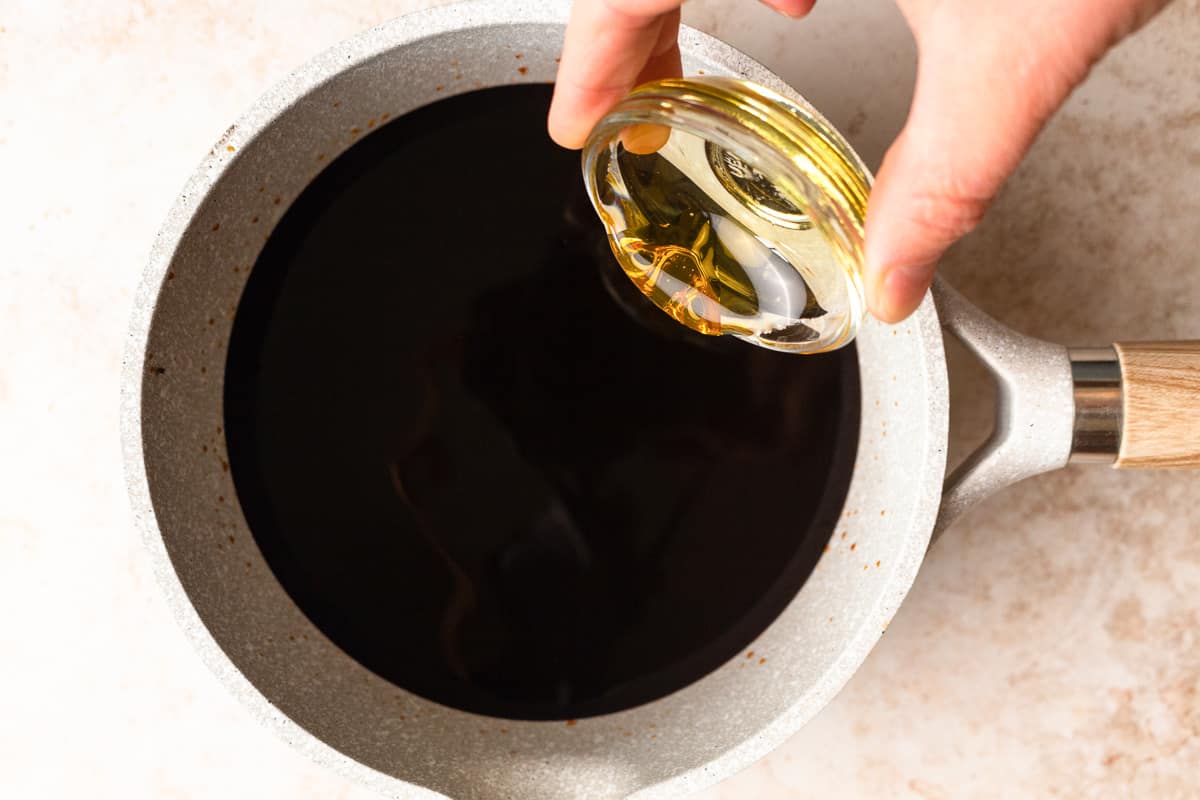
Season: Add 1 bay leaf and any other optional herbs or seasonings of your choice.
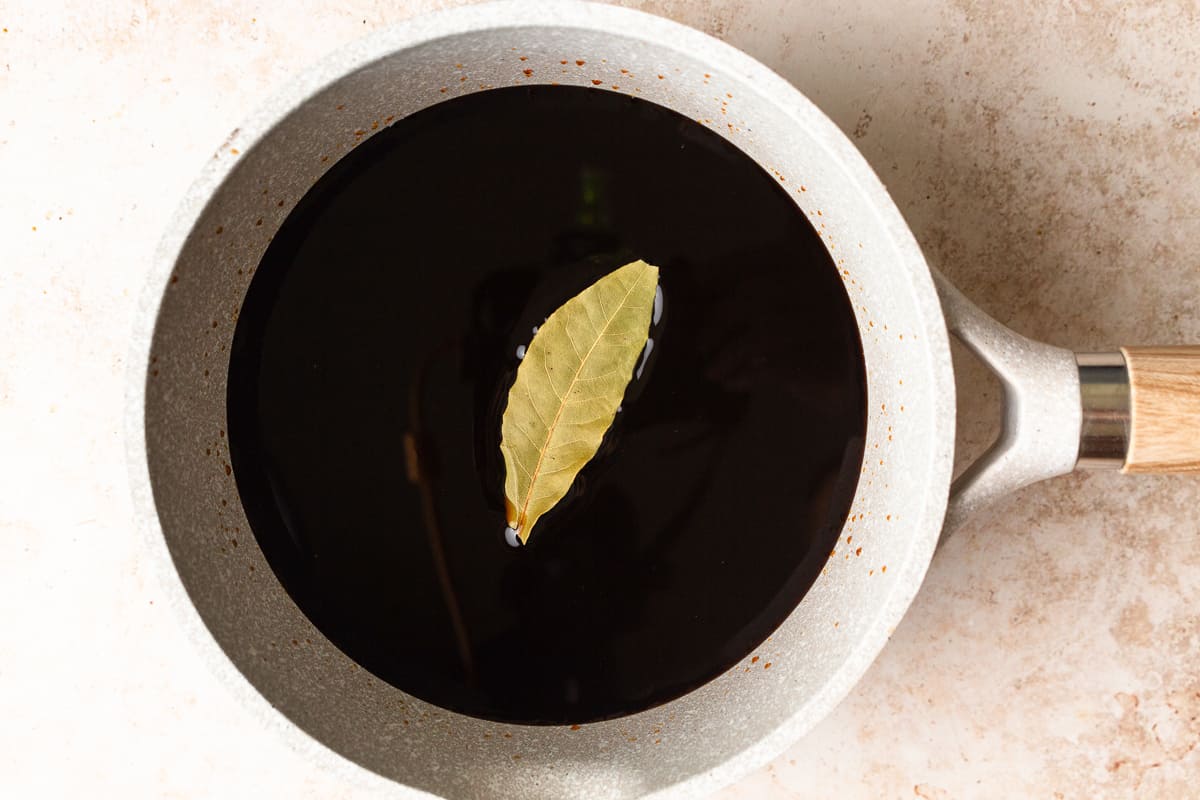
Reduce: Bring the balsamic vinegar to a boil over medium heat, then reduce heat and simmer until it starts to get syrupy. Watch closely so it doesn’t burn. When it reaches your desired consistency, remove it from heat, remove the bay leaf and strain through a sieve if other herbs have been added. Then let it cool to store, or use.
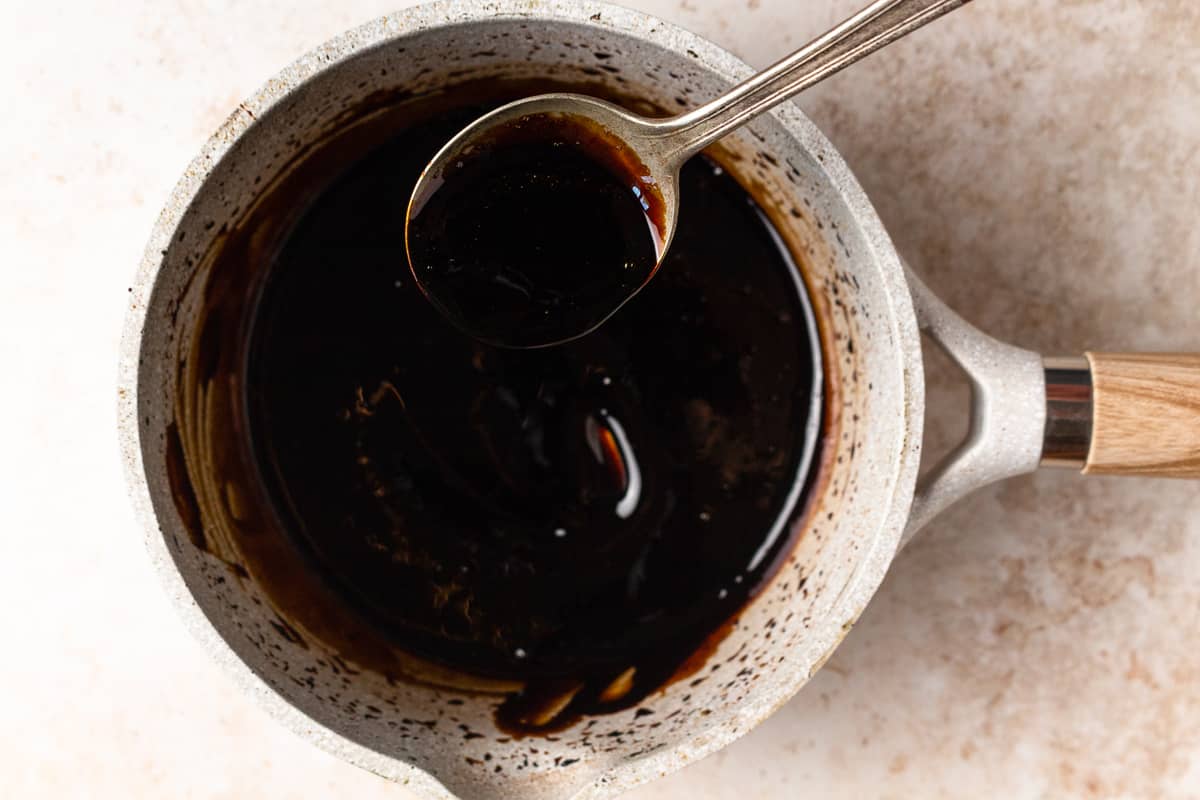







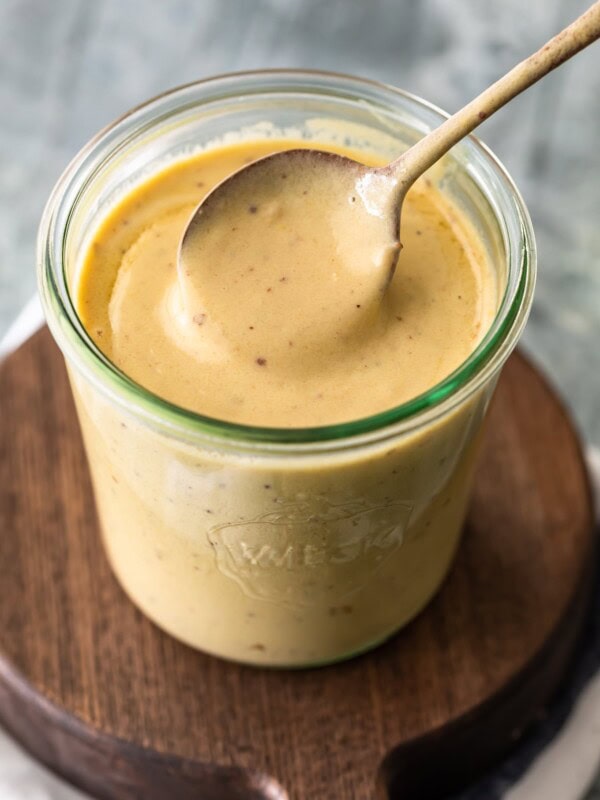
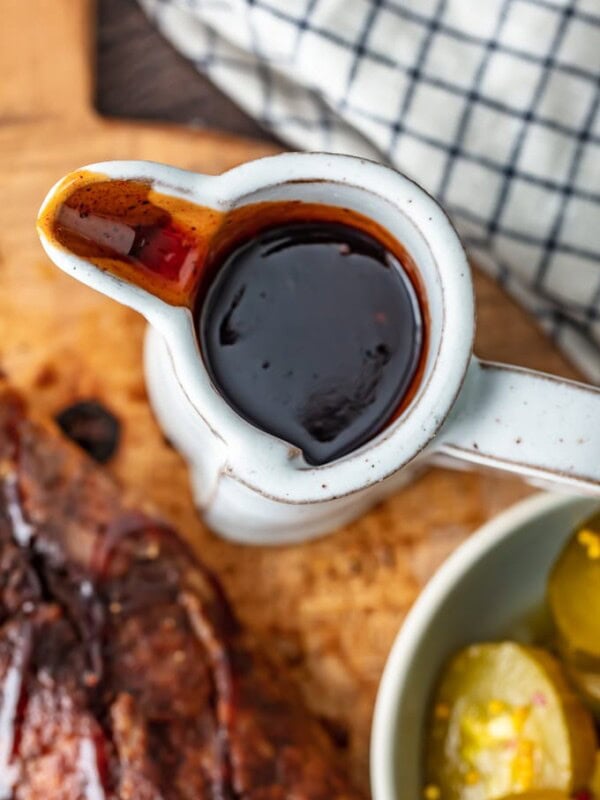
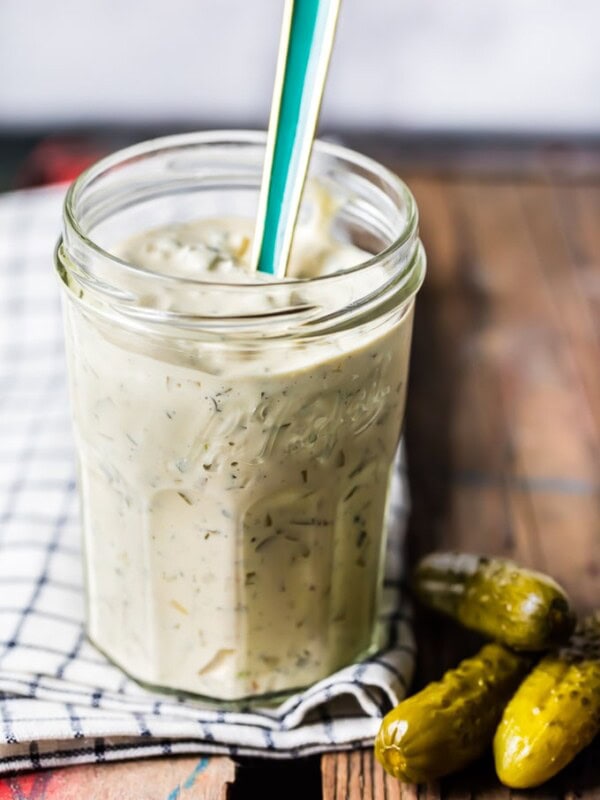
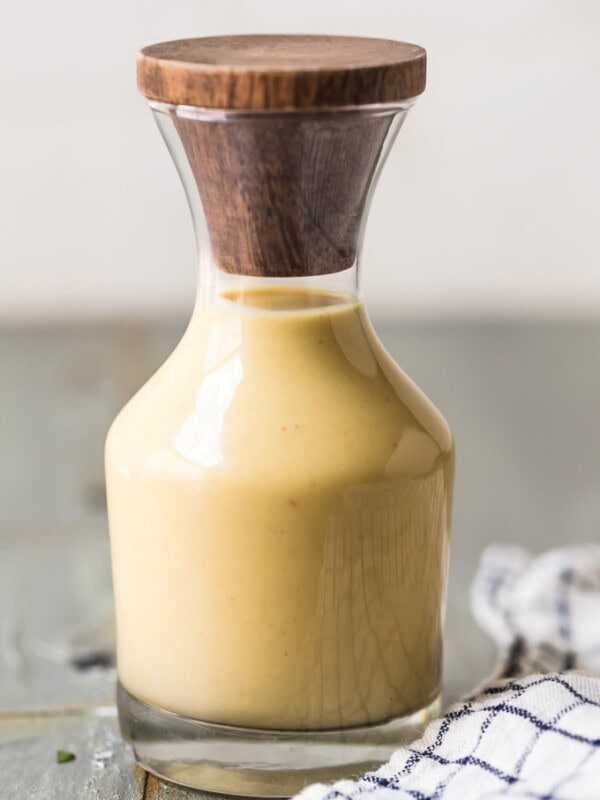






I recently discovered this luscious condiment. I made a recipe that called for this so I purchased the pre made “Gia Russa” brand and it is awesome! I’m anxious to try your recipe.
We hope you love it!
Mine is not getting syrupy… what am I doing wrong???
Most likely not adding enough sugar or not allowing it to simmer long enough on the stove. The longer it simmers, the thicker the syrup will become. Hope that helps!
Tried to make this once with alittle sugar in it. I wound up with a hard taffy that tasted like horehound drops!
You Rock the cooking world, great site, so many ideas, thanks :)
This just made my day! Thank you so much!! Really appreciate you checking us out :)